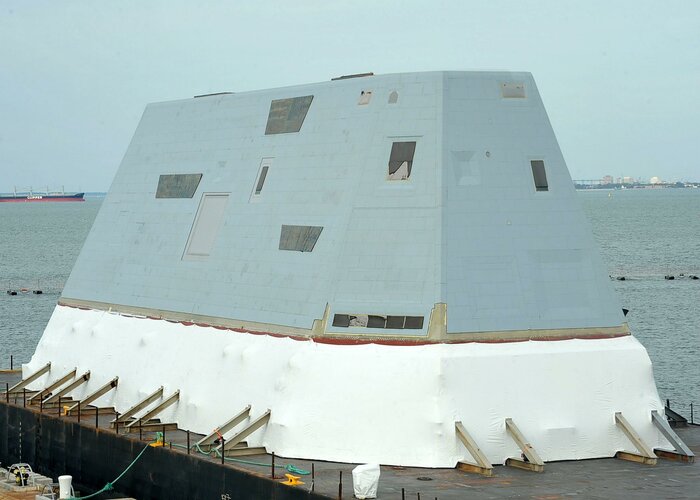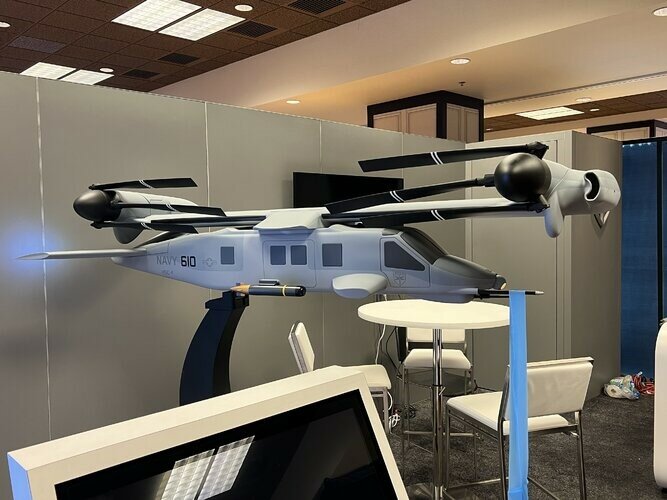SM-2 blk3C, ESSM blk2, and SM-6 use active seekers, so no directors are needed for terminal guidance if the most modern versions of those missiles are loaded. I believe the Constellations delete the directors as well.Question of a non-professional. There's no longer a need for separate Illuminator's, or?
You are using an out of date browser. It may not display this or other websites correctly.
You should upgrade or use an alternative browser.
You should upgrade or use an alternative browser.
DDG(X) - Arleigh Burke Replacement
- Thread starter Forest Green
- Start date
Firefinder
ACCESS: Top Secret
- Joined
- 5 October 2019
- Messages
- 1,049
- Reaction score
- 1,905
You forgot that the newest block of SM2 has an active radar with heat seeker as well.SM-2 blk3C, ESSM blk2, and SM-6 use active seekers, so no directors are needed for terminal guidance if the most modern versions of those missiles are loaded. I believe the Constellations delete the directors as well.Question of a non-professional. There's no longer a need for separate Illuminator's, or?
Forest Green
ACCESS: Above Top Secret
- Joined
- 11 June 2019
- Messages
- 9,535
- Reaction score
- 17,512
Is that for BMD?You forgot that the newest block of SM2 has an active radar with heat seeker as well.
You forgot that the newest block of SM2 has an active radar with heat seeker as well.SM-2 blk3C, ESSM blk2, and SM-6 use active seekers, so no directors are needed for terminal guidance if the most modern versions of those missiles are loaded. I believe the Constellations delete the directors as well.Question of a non-professional. There's no longer a need for separate Illuminator's, or?
SM-2 Blk 3C = the new version of Standard MR with the active seeker from SM-6. Basically SM-6 sans Mk72. Not sure if it retains the IR sensor of the Blk 3B. The Blk 3B has an IR sensor as counter to ECM; it isn't clear if this enables terminal guidance sans SPG-62 but some sources suggest it might.
Last edited:
X-39
To post or not to post, that is the question
- Joined
- 20 February 2021
- Messages
- 382
- Reaction score
- 928
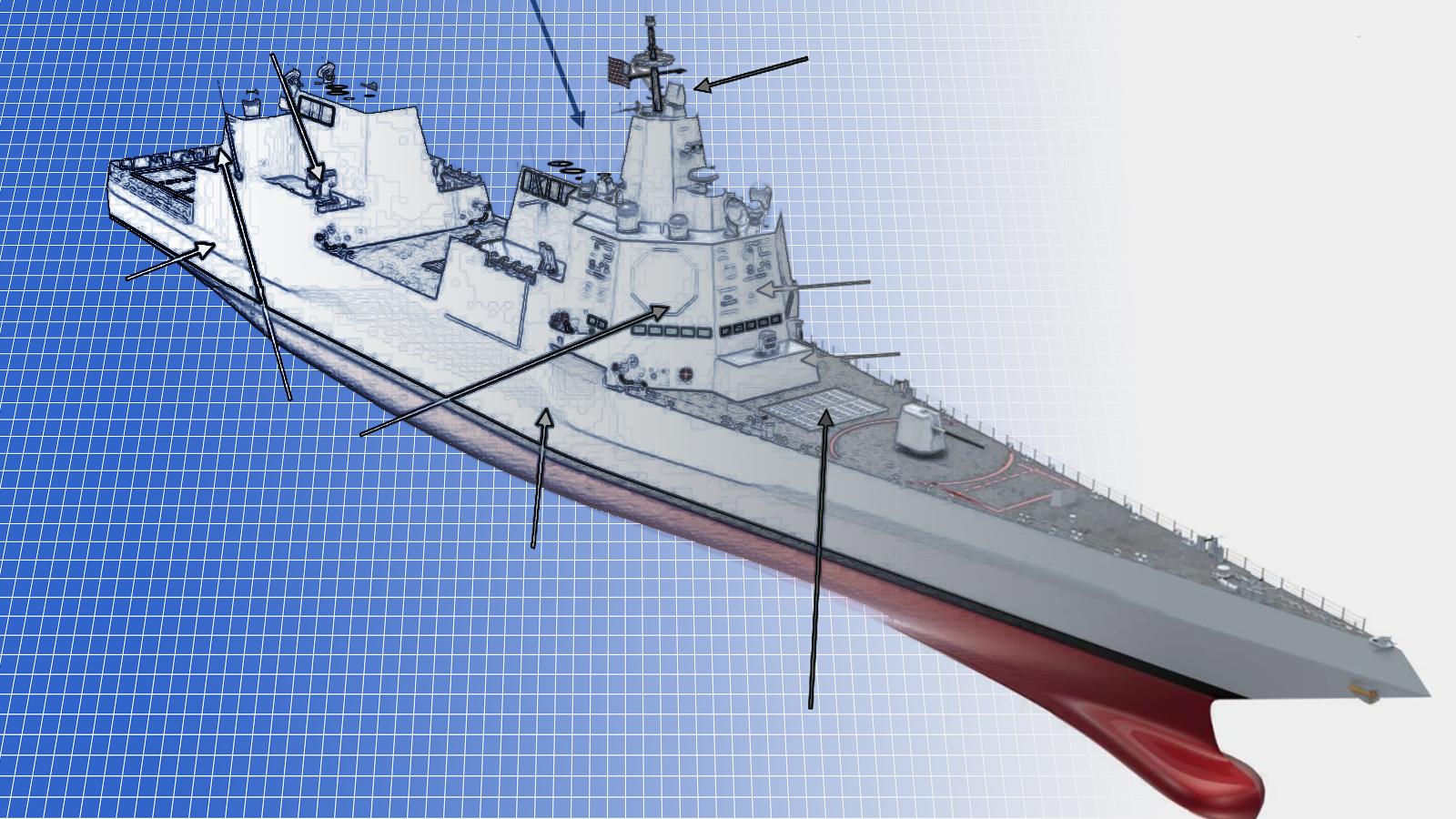
Navy awards HII, Bath engineering, design contracts for future destroyer - Breaking Defense
The Navy wants to buy the first DDG(X) in fiscal 2030.
First Burke Flight III Jack H Lucas, DDG-125 launched by HII June 4, 2021, nineteen months after keel laid."Quantity has a quality all of its own"
First impression it will cost anywhere from $3 to $5 billion each, don't know the figure for the equivalent Chinese Type 055 but would not be surprised they cost approx $1 billion each with their expertize as the largest shipbuilding nation.
The end result USN battle force will continue to get ever smaller over the years than the Chinese PLAN.
eg why specifying IPS, Zumwalt's IPS rumored to be a very, very expensive propulsion system and the complication/hours in build contributed to the BIW many years delay in delivering Zumwalts and the follow-on the Burkes backlog at BIW.
HHI South Korea’s first Aegis KDX III Batch II destroyer Jeongjo the Great launched today July 28,2022, ten months from keel laid with similar displacement or marginally larger than Burke Flight III, .
Is this a valid apples to apples comparison?, if so why does HII Burke launch taken nearly twice time than the South Korean shipyard for Jeongjo the Great, are the East Asian shipyards that much more efficient/capable. Assumption expect the Chinese can build their ~ 13,000t Type 055 in similar time frame as Jeongjo the Great, so again question is why is USN specifying on the face of it a more complicated/larger ship than Burke similar in size to the Type 055 that will only result not being able to match Chinese build rates?
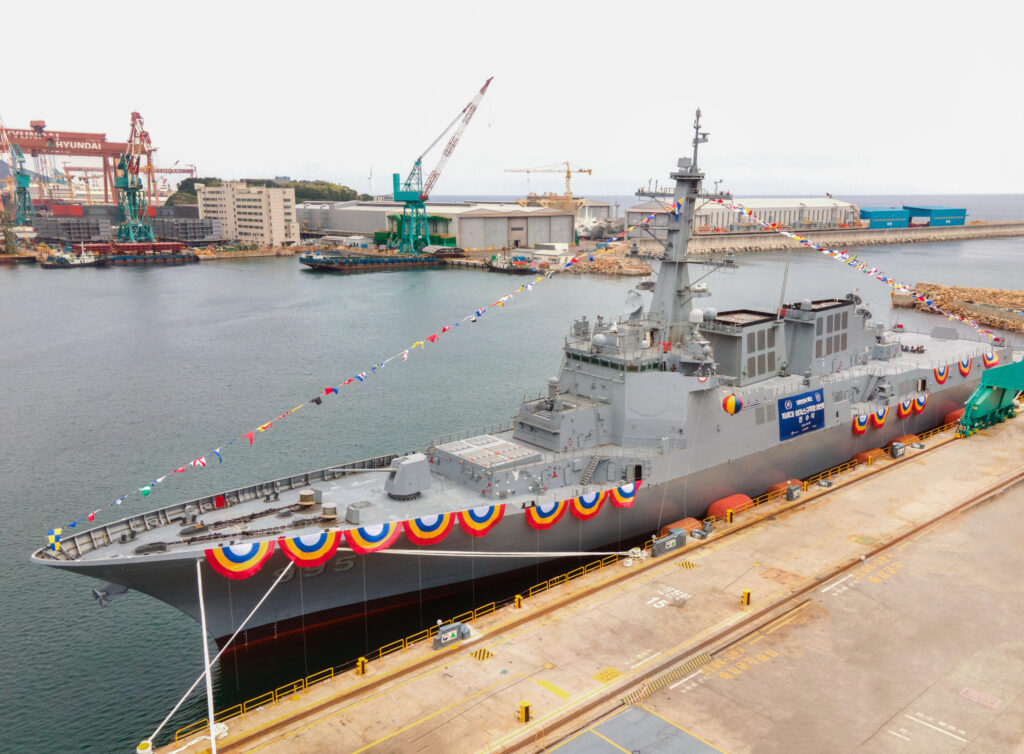
HHI Launches South Korea's First KDX III Batch II Destroyer - Naval News
South Korean shipbuilder Hyundai Heavy Industries (HHI) today launched the lead ship of the KDX-III Batch-II AEGIS destroyer project for the Republic of Korea (ROK) Navy: ROKS Jeongjo the Great.
- Joined
- 4 July 2010
- Messages
- 2,516
- Reaction score
- 3,097
KSG Batch 1 build times weren't far off from contemporary AB build times, I'm only speculating but it's possible they specifically sought to accelerate this batch. Possible incentives to do so run from an urgent ROKN need for hull to the desire to minimize the time the drydock is occupied (USN DDGs aren't built in drydock, by comparison).First Burke Flight III Jack H Lucas, DDG-125 launched by HII June 4, 2021, nineteen months after keel laid."Quantity has a quality all of its own"
First impression it will cost anywhere from $3 to $5 billion each, don't know the figure for the equivalent Chinese Type 055 but would not be surprised they cost approx $1 billion each with their expertize as the largest shipbuilding nation.
The end result USN battle force will continue to get ever smaller over the years than the Chinese PLAN.
eg why specifying IPS, Zumwalt's IPS rumored to be a very, very expensive propulsion system and the complication/hours in build contributed to the BIW many years delay in delivering Zumwalts and the follow-on the Burkes backlog at BIW.
HHI South Korea’s first Aegis KDX III Batch II destroyer Jeongjo the Great launched today July 28,2022, ten months from keel laid with similar displacement or marginally larger than Burke Flight III, .
Is this a valid apples to apples comparison?, if so why does HII Burke launch taken nearly twice time than the South Korean shipyard for Jeongjo the Great, are the East Asian shipyards that much more efficient/capable. Assumption expect the Chinese can build their ~ 13,000t Type 055 in similar time frame as Jeongjo the Great, so again question is why is USN specifying on the face of it a more complicated/larger ship than Burke similar in size to the Type 055 that will only result not being able to match Chinese build rates?

HHI Launches South Korea's First KDX III Batch II Destroyer - Naval News
South Korean shipbuilder Hyundai Heavy Industries (HHI) today launched the lead ship of the KDX-III Batch-II AEGIS destroyer project for the Republic of Korea (ROK) Navy: ROKS Jeongjo the Great.www.navalnews.com
Sufficiently motivated, and with proper prep work in a number of areas, HII and Bath could build destroyers quite swiftly....but it would be expensive.
totallyaverage
I really should change my personal text
- Joined
- 15 April 2018
- Messages
- 68
- Reaction score
- 148
US warship build rates are scheduled around sustaining a steady level of business for the yard, to avoid creating a boom/bust cycle. Additionally, funding is often spread over multiple budget years, and build rate is also affected by that.First Burke Flight III Jack H Lucas, DDG-125 launched by HII June 4, 2021, nineteen months after keel laid."Quantity has a quality all of its own"
First impression it will cost anywhere from $3 to $5 billion each, don't know the figure for the equivalent Chinese Type 055 but would not be surprised they cost approx $1 billion each with their expertize as the largest shipbuilding nation.
The end result USN battle force will continue to get ever smaller over the years than the Chinese PLAN.
eg why specifying IPS, Zumwalt's IPS rumored to be a very, very expensive propulsion system and the complication/hours in build contributed to the BIW many years delay in delivering Zumwalts and the follow-on the Burkes backlog at BIW.
HHI South Korea’s first Aegis KDX III Batch II destroyer Jeongjo the Great launched today July 28,2022, ten months from keel laid with similar displacement or marginally larger than Burke Flight III, .
Is this a valid apples to apples comparison?, if so why does HII Burke launch taken nearly twice time than the South Korean shipyard for Jeongjo the Great, are the East Asian shipyards that much more efficient/capable. Assumption expect the Chinese can build their ~ 13,000t Type 055 in similar time frame as Jeongjo the Great, so again question is why is USN specifying on the face of it a more complicated/larger ship than Burke similar in size to the Type 055 that will only result not being able to match Chinese build rates?

HHI Launches South Korea's First KDX III Batch II Destroyer - Naval News
South Korean shipbuilder Hyundai Heavy Industries (HHI) today launched the lead ship of the KDX-III Batch-II AEGIS destroyer project for the Republic of Korea (ROK) Navy: ROKS Jeongjo the Great.www.navalnews.com
Pretty much all USN ships are built intentionally more slowly than the yards can theoretically build them. It has been studied that, with preparation, the USN could accelerate CVNs at NNS to a three year authorization cycle rather than five, but budget realities prevent that. Similar potential exists in other classes. But the money isn't there, nor are the Navy resources to support those ships.
South Korea doesn't have to worry about spreading the workload to sustain their yards, their warships are built at commercial yards that get tons of business. This also has positive effects on cost for their ships, since the infrastructure required to build them has already been funded largely by commercial customers.
CV12Hornet
ACCESS: Top Secret
- Joined
- 8 January 2021
- Messages
- 509
- Reaction score
- 1,162
And in fact were doing exactly that for most of the Nimitz-class production run!Pretty much all USN ships are built intentionally more slowly than the yards can theoretically build them. It has been studied that, with preparation, the USN could accelerate CVNs at NNS to a three year authorization cycle rather than five, but budget realities prevent that. Similar potential exists in other classes. But the money isn't there, nor are the Navy resources to support those ships.
Dangerous assumption, that. Mostly because Chinese build times are rather opaque, due to the fact that they don't advertise their keel-laying dates and those are harder to spot than launch dates.Assumption expect the Chinese can build their ~ 13,000t Type 055 in similar time frame as Jeongjo the Great
The few Chinese DDGs I've seen have specific dates, they've been built about as fast as American DDGs.
- Joined
- 9 October 2009
- Messages
- 21,979
- Reaction score
- 13,645
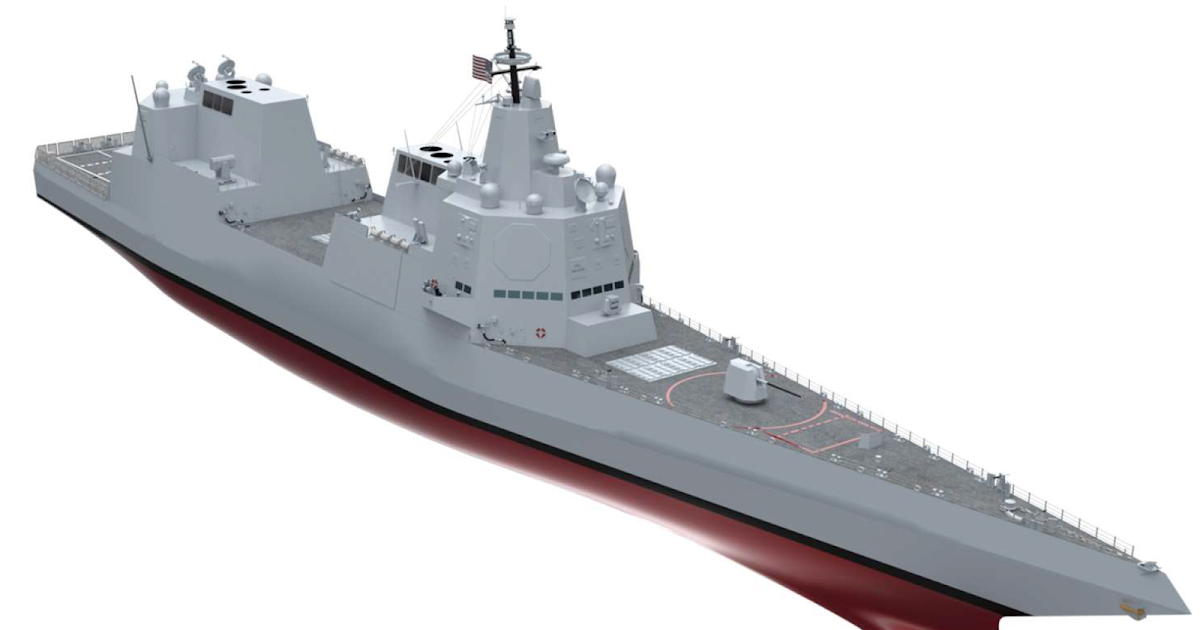
DDG(X) Becoming a CG(X) Flashback?
Navalists should be forgiven if they have, on occasion, the mindset and habits of an abused partner. Slightly flenching with memory, but al...
Firefinder
ACCESS: Top Secret
- Joined
- 5 October 2019
- Messages
- 1,049
- Reaction score
- 1,905
Considering that guy still goes on on how the New Threat System is still better then Aegis every chance he gets....
- Joined
- 4 July 2010
- Messages
- 2,516
- Reaction score
- 3,097
He also gives himself the credit for the Navy buying a Frigate. Ego unmatched outside the halls of the Air Force.Considering that guy still goes on on how the New Threat System is still better then Aegis every chance he gets....
Forest Green
ACCESS: Above Top Secret
- Joined
- 11 June 2019
- Messages
- 9,535
- Reaction score
- 17,512
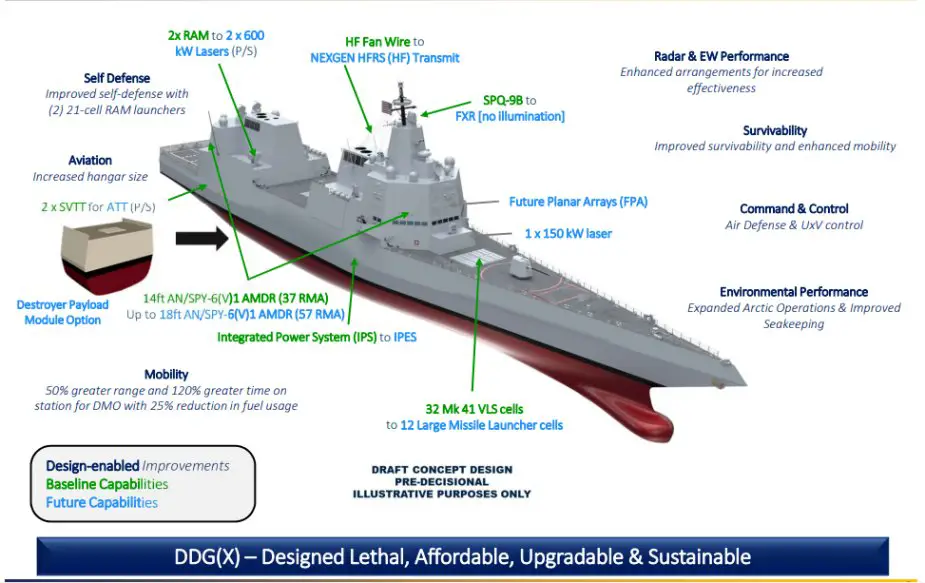
Production of DDG(X) next gen destroyers will be two years behind schedule
CBO has been published to describe the Navy’s planned inventory, purchases, deliveries, and retirements of ships in its fleet for the next 30 years.
Poo.
- Joined
- 9 October 2009
- Messages
- 21,979
- Reaction score
- 13,645
Indeed.Poo.
CV12Hornet
ACCESS: Top Secret
- Joined
- 8 January 2021
- Messages
- 509
- Reaction score
- 1,162
If the DDG(X) winds up only costing 10% more than a Burke III I will be ecstatic.
- Joined
- 21 April 2009
- Messages
- 13,760
- Reaction score
- 7,702
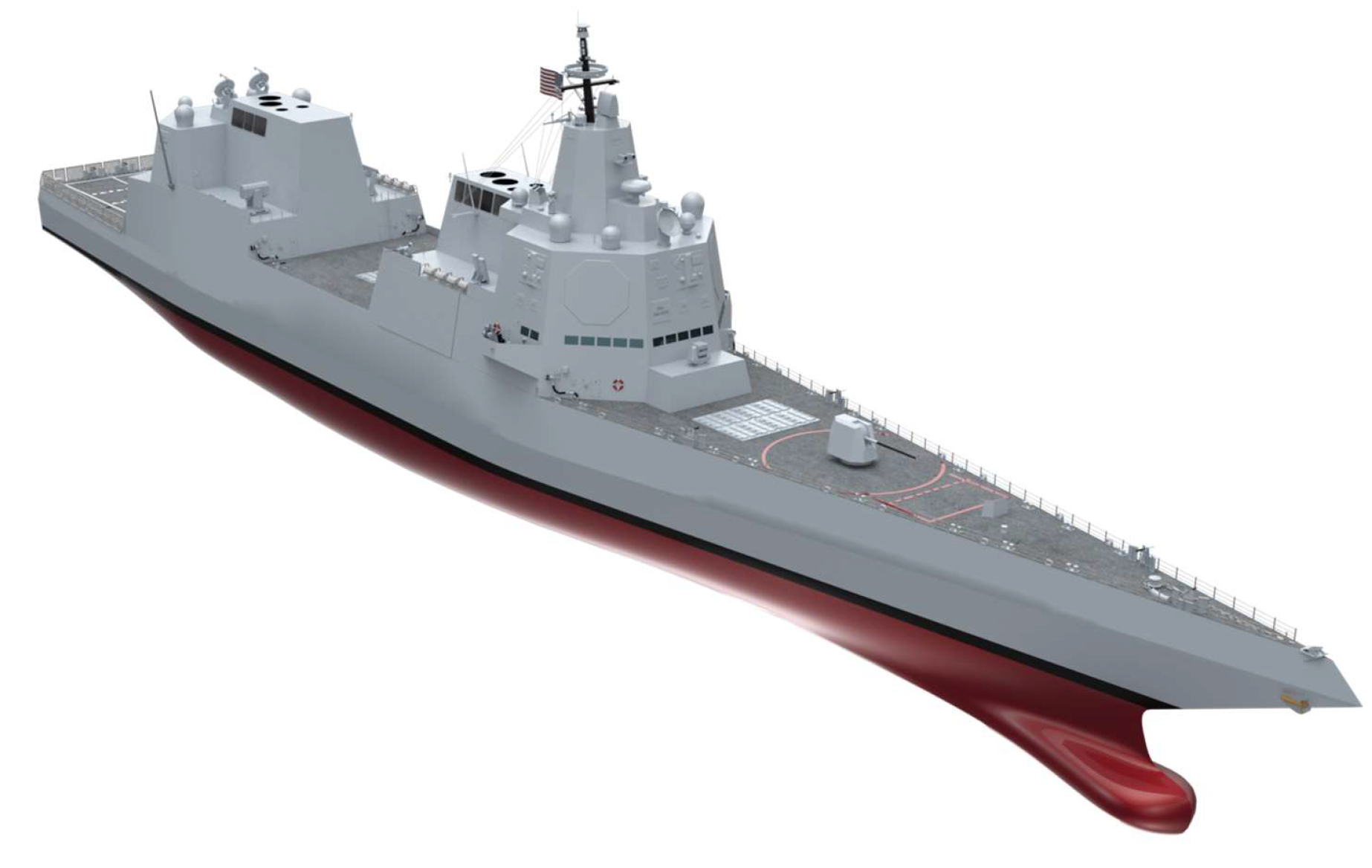
Report to Congress on Navy's Next-Generation Destroyer - USNI News
The following is the Nov. 28, 2022, Congressional Research Service In Focus report, Navy DDG(X) Next-Generation Destroyer Program: Background and Issues for Congress. From the report The Navy’s DDG(X) program envisages procuring a class of next-generation guided-missile destroyers (DDGs) to...
The CBO November 2022report "An Analysis of the Navy’s Fiscal Year 2023 Shipbuilding Plan" finds that unbelievable.If the DDG(X) winds up only costing 10% more than a Burke III I will be ecstatic.
A few quotes from the report
"The Navy estimates that the average cost of the DDG(X) would vary from $2.3 billion per year under Alternatives 1 and 3 to $2.4 billion per year under Alternative 2. (The greater cost under Alternative 2 results from buying the ship more often at a rate of one per year instead of the higher rates under the other alternatives, which would decrease the benefit from the rate effect.) // The Navy has indicated that the initial design prescribes a displacement of 13,500 tons. If that is the case, then the Navy’s estimates imply that the DDG(X) would cost 10 percent more than the DDG-51 Flight III but would have a full-load displacement that is 40 percent greater.
Such an outcome, however, seems unlikely on the basis of the history of building new surface combatants. For example, in the 2000s, the Navy estimated that the Zumwalt class DDG-1000 guided missile destroyer would cost only slightly more than the DDG-51s that were then in production, even though the DDG-1000 was 50 percent larger than the DDG-51. Ultimately, costs for the DDG-1000 increased by about 45 percent // As a result of the increase in the size of the DDG(X), CBO estimates that its average cost would range from $3.1 billion to $3.4 billion under the Navy’s three alternatives (or 34 percent to 42 percent more than the Navy’s estimates)
The Navy would need funding of $125 billion under Alternative 1 [38 ships], $99 billion under Alternative 2 [29 ships], and $146 billion under Alternative 3 [47 ships] "
PS For the first time the Navy 30 year plans included three Alternatives 1,2 & 3, in all previous years Navy had just one 30 year plan!
Congress needs to put a cost cap on the DDG(X) so as to be able it to fund number of ships so at least build rate up to at least half the numbers the PLAN building Type 055s etc, as envisaged DDG(X) would be too expensive and take much too long in build for adequate numbers.
PS The Burke Flight IIA DDG-123, has taken five years from keel being laid to just being delivered, WWII lasted less the four years.
Firefinder
ACCESS: Top Secret
- Joined
- 5 October 2019
- Messages
- 1,049
- Reaction score
- 1,905
That is due to several...PS The Burke Flight IIA DDG-123, has taken five years from keel being laid to just being delivered, WWII lasted less the four years
Hundreds of Delays as they found that the stuff used a few years ago for the earlier ships...
Was not made any more.
Stuff like seals, wiring, even the fucking MK41 VLS needed to be replace or restarted. With the replaced stuffed causing redesigns of tge ship itself.
And they had to rebuild tge Yard from the Zumwalts spec BACK to Burke Spec at the same time.
The Restarting of tge Burke line has had more problems and cost bloat then any of the "issues" that the Zumwalt had.
The fact that government "accountablity" types are not singing this to the heaven like they did for the Zumwalts, Fords, F22 and F35s says something bout listening to them.
If you want high end ships... your going to pay the High end price in both time and many.
Cause you get what you pay for is a fucking thing for a reason.
PS, DDG123 is the only ship to take 5 years, Ddg 120-22 and 124 up has or is projected to take 3 years.
- Joined
- 19 July 2016
- Messages
- 4,287
- Reaction score
- 3,466
Only in the minds of some.WWII lasted less the four years.
- Joined
- 6 November 2010
- Messages
- 5,263
- Reaction score
- 5,517
That was Cordy's remark, not CV12Hornet's.WWII lasted less the four years.
Other than that:
Quite so.Only in the minds of some.
- Joined
- 19 July 2016
- Messages
- 4,287
- Reaction score
- 3,466
Appologies, I actually quoted the correct post but something must have gone awry, possibly when I cut down the quoted text.
The three Zumwalts were all built by BIW, none by Ingalls, Ingalls did build the Zumwalt 1,000t stealth balsa composite steel deck house for the first two ships at a dedicated plant which Ingalls shuttered when for third Zumwalt, Lyndon B Johnson, the Navy to cut costs went for an all steel non-stealth deckhouse.PS The Burke Flight IIA DDG-123, has taken five years from keel being laid to just being delivered, WWII lasted less the four years
And they had to rebuild tge Yard from the Zumwalts spec BACK to Burke Spec at the same time.
The Restarting of tge Burke line has had more problems and cost bloat then any of the "issues" that the Zumwalt had.
DDG-123 is the fourth ship built after Ingalls re-started production of Burkes, as said five years in build.
Would note not an apples apples comparison by a long way, but the Japanese Mitsui shipyard started build of their first 5,500t Mogami frigate, the second in class and it started sea trials only two years later.
Attachments
aonestudio
I really should change my personal text
- Joined
- 11 March 2018
- Messages
- 2,965
- Reaction score
- 7,494
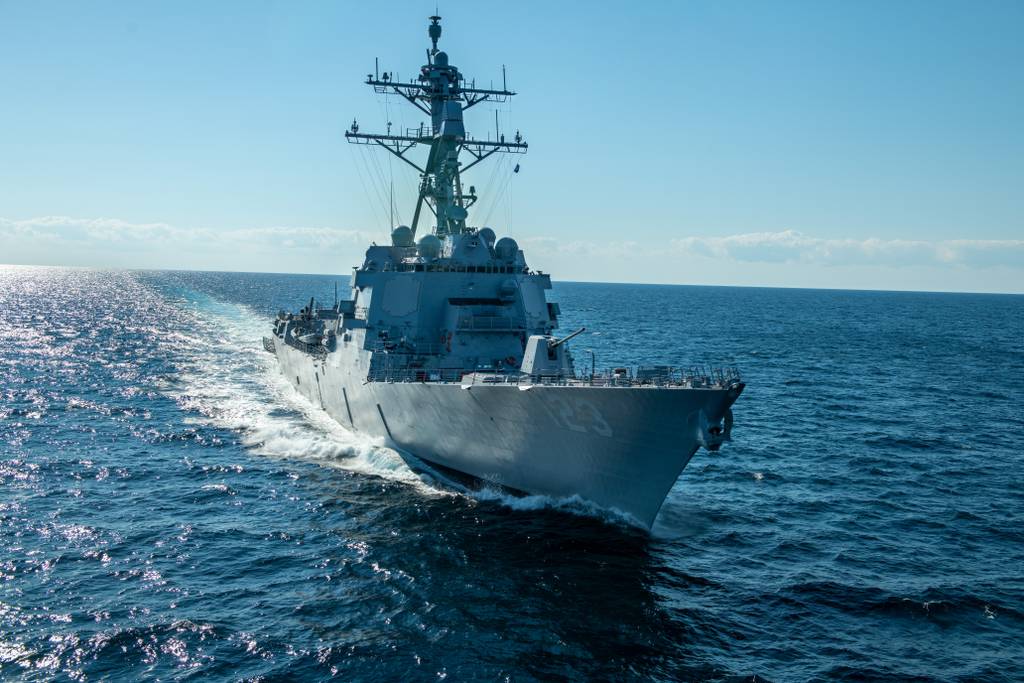
US Navy secretary sees no need to rush next-gen destroyer program
The industrial base is behind on destroyer deliveries, but SECNAV wants to continue the line "for a long period of time" instead of rushing to start DDG(X)

SECNAV Del Toro: Navy Needs to ‘Be Realistic’ in Pursuit of Next Destroyer, Sub, Fighter - USNI News
The technologies developed for the Navy’s next destroyer, submarine and fighter must be mature and cost-effective before the new platforms go into production, Secretary of the Navy Carlos Del Toro told USNI News in an interview last week. The Navy’s next-generation guided-missile destroyer...
“Flight IIIs are great. They’re wonderful platforms but eventually, they’re going to be challenged by the power capability of the ship, especially when you start implementing directed energy weapons, and other things that have great power demands on them,” Del Toro said.
“You don’t need to build a completely new transformational destroyer [costing] $5 billion, either. It’s the technology and the weapon system that matter the most. Why not go with a slightly revised hull form? Perhaps it isn’t too different from DDG Flight III, but bigger, has simply more space to accommodate the power required. I’m an engineer, I like to think about things incrementally and not get overhyped about the sexy new toy that looks good.”
- Joined
- 9 October 2009
- Messages
- 21,979
- Reaction score
- 13,645
[Facepalm]
- Joined
- 19 July 2016
- Messages
- 4,287
- Reaction score
- 3,466
SECNAV said that? Wot the actual fried green tomato's is he on? With the direction of travel in certain independant nations it seems these assets are needed as soon as. I can only hope he was trying to divert something from the truth. I know, seems a little far fetched and unlikely.
- Joined
- 16 April 2008
- Messages
- 9,611
- Reaction score
- 14,516
SECNAV said that? Wot the actual fried green tomato's is he on? With the direction of travel in certain independant nations it seems these assets are needed as soon as. I can only hope he was trying to divert something from the truth. I know, seems a little far fetched and unlikely.
I'd really want to see the rest of that comment. I suspect he's mostly throwing cold water on the idea of DDG(X) using something more like the Zumwalt hull shape. And possibly on the new "artic" hullform mentioned on that DDG(X) concept slide.
Last edited:
- Joined
- 27 September 2006
- Messages
- 6,417
- Reaction score
- 6,823
The Spruance class were condemned as too expensive and underarmed when they first appeared in the 70s but this allowed the USN to get AEGIS to sea in decent numbers of Ticonderoga class.
The Burke class started life as an austere version of AEGIS to replace large numbers of Cold War build missile ships.
The USN now has the colossal task of replacing both Ticos and Burkes with a new class.
It will not be easy.
The Burke class started life as an austere version of AEGIS to replace large numbers of Cold War build missile ships.
The USN now has the colossal task of replacing both Ticos and Burkes with a new class.
It will not be easy.
- Joined
- 19 July 2016
- Messages
- 4,287
- Reaction score
- 3,466
"Whatever you play, make it (Loud) fast". Butchered from Good morning Vietnam, Robin Williams (RIP).
- Joined
- 4 July 2010
- Messages
- 2,516
- Reaction score
- 3,097
Two thoughts, first is that the "just build a slightly bigger Burke" or "just build something like Korea's KSG" position has been around quite awhile so we should not be surprised to find it in a leadership position.
Second thought is that there's real desire by some Democratic navalists to replace Del Toro, whose tenure has been uninspiring, with Rep. Elaine Luria. He may known this an be seeking to punt the DDG(X) decisions to her. Or he may be trying to carve out a stance that he feels would earn him support from the deficit hawks.
Second thought is that there's real desire by some Democratic navalists to replace Del Toro, whose tenure has been uninspiring, with Rep. Elaine Luria. He may known this an be seeking to punt the DDG(X) decisions to her. Or he may be trying to carve out a stance that he feels would earn him support from the deficit hawks.
aonestudio
I really should change my personal text
- Joined
- 11 March 2018
- Messages
- 2,965
- Reaction score
- 7,494
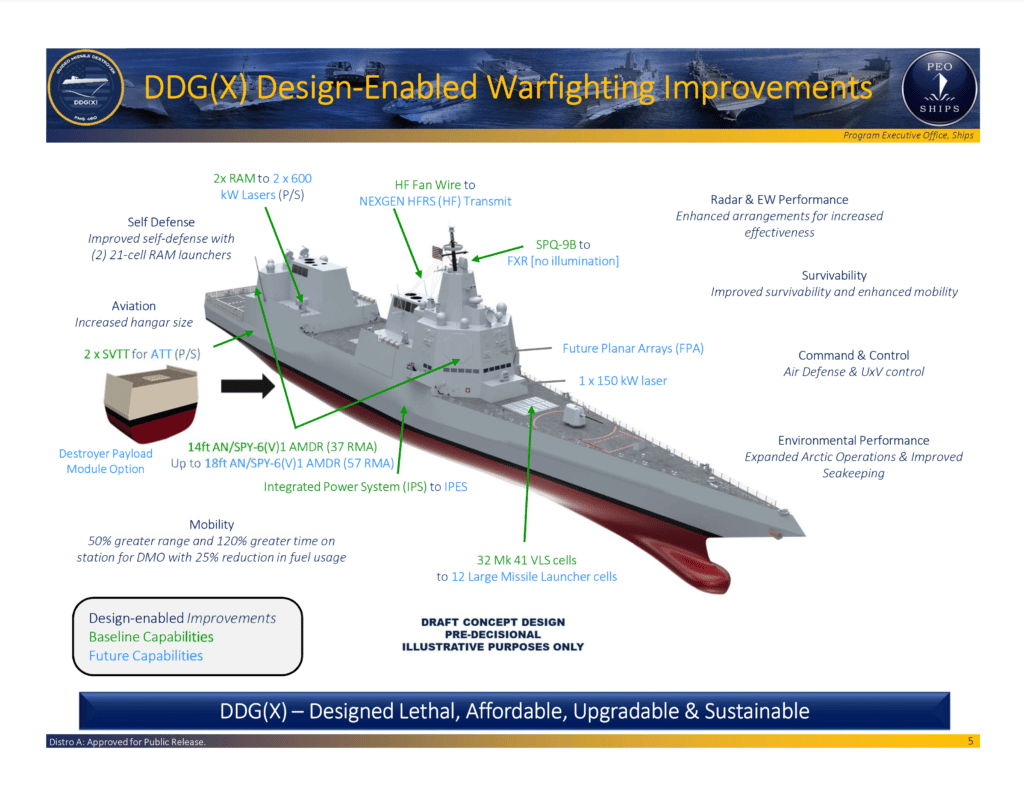
RAND Comments on DDG(X) Next-Generation U.S. Navy Destroyer - Naval News
Naval News reached out to the RAND Corporation for comments, and opinions on the US Navy’s next-generation destroyer program, DDG(X).

RAND Comments on DDG(X) Next-Generation U.S. Navy Destroyer - Naval News
Naval News reached out to the RAND Corporation for comments, and opinions on the US Navy’s next-generation destroyer program, DDG(X).www.navalnews.com
A few thoughts on the interview
Dr. Bradley Martin, a retired U.S. Navy captain, and Director, Institute for Supply Chain Security at the RAND Corporation replied to Naval News via email in early December 2022.
Naval News: A lot of criticism is about cost per DDG(X) hull. Do you believe that the DDG(X) program is worth the cost and each hull is worth the price?
Dr. Martin: The purpose of exploring new hull designs is to get the surface force to a new design. Since the DDG-51 design has been around since the 1980s, finding a form suitable for new power and modernization requirements seems important. Anything new is likely to have a development cost, but ultimately every form requires upgrade and replacement.
To me that's a an unsatisfactory answer and wants to avoid giving a direct response. The CBO November 2022 report "An Analysis of the Navy’s Fiscal Year 2023 Shipbuilding Plan" saying they estimate the new 13,500t DDG(X) will cost would range from $3.1 billion to $3.4 billion compared to a Burke Flt III at $2.2 billion, so looking at ~$1 billion/50% increase compared to cost of a Burke Flt III.
Dr Martin envisaged build of ~40 ships, the Navy April 2022 FY2023 30 year shipbuilding construction plan shows options of 29, 38 and 47 DDG(X) ships in its three Alternative plans, 1, 2 and 3.
Question is whether the super DDG(X) is worth the extra ~$1 billion over a Burke or would it be better choice aiming to keep the cost of the DDG(X) the same as the Burke and have the funding to procure say an additional 40 FFG-62 Constellation's, which would be the better option?
Would it be possible to cut the cost of the DDG(X) by ~$1 billion
Possible options to cut costs?, you could interpret Dr Martin answer as no to the Anti-Submarine Warfare (ASW) mission as not part of its CONOPS, dedicated to AAW and BMD, found odd ASuW notincluded, if so and the Navy was serious to cut costs they could delete the hanger, landing deck, its large expensive sonars, air compliment etc and rely on the Constellation's for ASW which Navy have said is its prime mission, the result DDG(X) would have the space to fit more VLS cells or build a smaller ship."Naval News: What roles should the DDG(X) provide—Anti-Submarine Warfare (ASW), AAW, BMD, or Anti-Surface Warfare (ASuW), and what emphasis should it focus mainly on?
Dr. Martin: All of these will be important missions, depending on the scenario. For the current scenarios, I would emphasize AAW [Anti-Air Warfare] and BMD [Ballistic Missile Defense], and rely on other platforms and theater assets for the other missions."
Another possible option to cut costs is with the propulsion system envisaged, the Navy new IPSES which is a highly complex network, read that as highly expensive, being proposed by NAVSEA PMS 320 Electric Ships Office, IPES - Harnessing Total Ship Energy & Power, April 2018 presentation
https://www.navsea.navy.mil/Portals/103/Documents/Exhibits/SAS2018/Markle-SurfaceNavyElectricalLeapForward.pdf?ver=2018-04-12-074110-193
- Joined
- 16 April 2008
- Messages
- 9,611
- Reaction score
- 14,516
Possible options to cut costs?, you could interpret Dr Martin answer as no to the Anti-Submarine Warfare (ASW) mission as not part of its CONOPS, dedicated to AAW and BMD, found odd ASuW notincluded, if so and the Navy was serious to cut costs they could delete the hanger, landing deck, its large expensive sonars, air compliment etc and rely on the Constellation's for ASW which Navy have said is its prime mission, the result DDG(X) would have the space to fit more VLS cells or build a smaller ship.
The Navy has been burned once by leaving hangars off the DDG-51 Flight I/II "AAW" ships. That will not happen again. Helos and hangars are highly versatile and not just for ASW. You might not see towed/VDS sonars, but I'd bet on a hull set, because these ships are going to end up posted outside the inner screen for TBMD tasks and may need to fend for themselves on ASW to some degree. ASuW costs next to nothing to add at least some capacity, and again the USN got burned by leaving it off some DDG-51s. Expect at least eight NSM boxes to go along with SM-6 in the VLS.
Last edited:
Agree with the above. Helos (and in the future UAVs) are too versatile to omit for an escort and sonar is needed for self defense, close high value target escort, and account for attrition of the task force. Move over deleting the sonar and ASW crew from a multi billion dollar cruiser (and that's what DDGX will be) is kinda like skipping the cherry on your hot fudge sundae to save calories.Possible options to cut costs?, you could interpret Dr Martin answer as no to the Anti-Submarine Warfare (ASW) mission as not part of its CONOPS, dedicated to AAW and BMD, found odd ASuW notincluded, if so and the Navy was serious to cut costs they could delete the hanger, landing deck, its large expensive sonars, air compliment etc and rely on the Constellation's for ASW which Navy have said is its prime mission, the result DDG(X) would have the space to fit more VLS cells or build a smaller ship.
The Navy has been burned once by leaving hangars off the DDG-51 Flight I/II "AAW" ships. That will not happen again. Helos and hangars are highly versatile and not just for ASW. You might not see towed/VDS sonars, but I'd bet on a hull set, because these ships are going to end up posted outside the inner screen for TBMD tasks and may need to fend for themselves on ASW to some degree. ASuW costs next to nothing to add at least some capacity, and again the USN got burned by leaving it off some DDG-51s. Expect at least eight NSM boxes to go along with SM-6 in the VLS.
I think inevitably what is going to have to give is not ancillary capabilities on major combatant platforms but the number of major platforms. IE, I think DDGX becomes at most a 1:1 Tico replacement and by the mid 2030s FFGX becomes the backbone of the USN in terms of number of hulls.
How exactly did the Navy get "burned" by leaving hangers off the Burkes Flt I & II, understand helos not just for ASW, but they come at a large cost of ~30% of the weapons deck needed for the hanger and landing deck that could be used for additional VLS cells and if with an accompanying FFG-62 it will have a helo.Possible options to cut costs?, you could interpret Dr Martin answer as no to the Anti-Submarine Warfare (ASW) mission as not part of its CONOPS, dedicated to AAW and BMD, found odd ASuW notincluded, if so and the Navy was serious to cut costs they could delete the hanger, landing deck, its large expensive sonars, air compliment etc and rely on the Constellation's for ASW which Navy have said is its prime mission, the result DDG(X) would have the space to fit more VLS cells or build a smaller ship.
The Navy has been burned once by leaving hangars off the DDG-51 Flight I/II "AAW" ships. That will not happen again. Helos and hangars are highly versatile and not just for ASW. You might not see towed/VDS sonars, but I'd bet on a hull set, because these ships are going to end up posted outside the inner screen for TBMD tasks and may need to fend for themselves on ASW to some degree. ASuW costs next to nothing to add at least some ASuW capacity, and again the USN got burned by leaving it off some DDG-51s. Expect at least eight NSM boxes to go along with SM-6 in the VLS.
The Navy have enough ships that brings the big advantage that a squadron can have dedicated ships for each mission role so don't need costly multiple function ships and the crew can be trained to be the best in that particular role.
The Navy have enough ships that brings the big advantage that a squadron can have dedicated ships for each mission role so don't need costly multiple function ships and the crew can be trained to be the best in that particular role.
I'd argue USN ships still need to be multirole to allow for redundancy between platforms in casualty situations.
- Joined
- 16 April 2008
- Messages
- 9,611
- Reaction score
- 14,516
How exactly did the Navy get "burned" by leaving hangers off the Burkes Flt I & II, understand helos not just for ASW, but they come at a large cost of ~30% of the weapons deck needed for the hanger and landing deck that could be used for additional VLS cells and if with an accompanying FFG-62 it will have a helo.
Basically, because not having hangars on the early DDG-51s meant they were limited in what you could do with them. No (or at least very limited) independent sailing, which accounts for a surprisingly large portion of a ship's peacetime or low-intensity operations. ASW limited to rearming/refueling someone else's helicopter.
And even in task force operations, you really need the flight deck (with or without the hangar). Helos are how stuff gets shuttled around -- spare parts, supplies, people, casualties, etc. VERTREP spots are not ideal, especially for personnel moves. Hoisting PAX on and off a ship is time-consuming, stressful, and dangerous. And I guarantee the squadron commander does not want to ride a horse collar to get from the DDG(X) to the carrier for conferences.
And let's look at the actual "cost" of the hangar and flight deck. You threw out a figure of 30%. But compare the Flight I and the Flight IIA -- very similar dimensions (essentially the same; there are no more frames in a Flight IIA) despite the hangar in the IIA. Deleting the hangar would not necessarily buy you more VLS, because the hangar is right on the main deck and the VLS has to extend below that, into volume that is being used for other things.
Deleting the flight deck as well still doesn't buy below-deck volume, though I suppose in theory you could shorten the hull a bit. But you still need some of the length for a VERTREP spot and you need most of the volume for whatever is already under the flight deck. And a shorter hull isn't always better -- longer hulls are easier to power and generally have better seakeeping.
Basically, flight decks and hangars are the exemplar for the widespread comment about ship design, that "steel is cheap and air is free." They don't really cost much to add and provide versatility even if you don't have enough helos to fill them up all the time.
You make some good points, but to clarify when i mentioned "they come at a large cost of ~30% of the weapons deck needed for the hanger and landing deck" talking length not dollars. Some counter arguments, would note Navy ships operated very successfully in WWII with no helos, do agree useful, but not a necessity as they come at large cost especially when they get gold plated with ASW as expect on the future DDG(X), when other ships, the ASW FFG-62 frigates, are equipped with helos, would also make the point that no way Navy should not be using a $2+ billion Burkes or the $3+ billion DDG(X) for low intensity operations, but Navy had to use the Burke as the only surface warship avaiable, why the need for a frigate.How exactly did the Navy get "burned" by leaving hangers off the Burkes Flt I & II, understand helos not just for ASW, but they come at a large cost of ~30% of the weapons deck needed for the hanger and landing deck that could be used for additional VLS cells and if with an accompanying FFG-62 it will have a helo.
Basically, because not having hangars on the early DDG-51s meant they were limited in what you could do with them. No (or at least very limited) independent sailing, which accounts for a surprisingly large portion of a ship's peacetime or low-intensity operations. ASW limited to rearming/refueling someone else's helicopter.
And even in task force operations, you really need the flight deck (with or without the hangar). Helos are how stuff gets shuttled around -- spare parts, supplies, people, casualties, etc. VERTREP spots are not ideal, especially for personnel moves. Hoisting PAX on and off a ship is time-consuming, stressful, and dangerous. And I guarantee the squadron commander does not want to ride a horse collar to get from the DDG(X) to the carrier for conferences.
And let's look at the actual "cost" of the hangar and flight deck. You threw out a figure of 30%. But compare the Flight I and the Flight IIA -- very similar dimensions (essentially the same; there are no more frames in a Flight IIA) despite the hangar in the IIA. Deleting the hangar would not necessarily buy you more VLS, because the hangar is right on the main deck and the VLS has to extend below that, into volume that is being used for other things.
Deleting the flight deck as well still doesn't buy below-deck volume, though I suppose in theory you could shorten the hull a bit. But you still need some of the length for a VERTREP spot and you need most of the volume for whatever is already under the flight deck. And a shorter hull isn't always better -- longer hulls are easier to power and generally have better seakeeping.
Basically, flight decks and hangars are the exemplar for the widespread comment about ship design, that "steel is cheap and air is free." They don't really cost much to add and provide versatility even if you don't have enough helos to fill them up all the time.
What also partially drove my thinking was the report by InsideDefense where it appears Navy planning to replace the MH-60R/S with the folded wing naval version of the Valor V-280 and no doubt will design the DDG(X) to operate, it will not be a cheap option and as said will take up a lot of space on the weapons deck.
https://insidedefense.com/insider/n...vy is working on,has asked for industry input.
Attachments
- Joined
- 16 April 2008
- Messages
- 9,611
- Reaction score
- 14,516
You make some good points, but to clarify when i mentioned "they come at a large cost of ~30% of the weapons deck needed for the hanger and landing deck" talking length not dollars. Some counter arguments, would note Navy ships operated very successfully in WWII with no helos, do agree useful, but not a necessity as they come at large cost especially when they get gold plated with ASW as expect on the future DDG(X), when other ships, the ASW FFG-62 frigates, are equipped with helos, would also make the point that no way Navy should not be using a $2+ billion Burkes or the $3+ billion DDG(X) for low intensity operations, but Navy had to use the Burke as the only surface warship avaiable, why the need for a frigate.
WW2 started *checks notes* more than 80 years ago now. This is comparable to telling WW1 navies that sailing ships worked well enough in the war of 1812, so who needs that fancy steam power now?
I'll reiterate that the actual aviation facilities on a ship do not cost very much in the scheme of things. It's mostly steel and air, plus a little hardware and a few billets. The aircraft may be expensive, but that's a separate issue. You can still fit the hangar and flight deck, even if you don't always have the aircraft. But for a high-value ship like DDG(X), I'd say that not embarking one helo would be a false economy that hamstrings the ship operationally more than the cost of the aircraft.
And if ASW aircraft costs become too high, you might well see a utility aircraft (like the MH-60S but less) to fill out the force. And you'll definitely want a place for that on some combatants.
What also partially drove my thinking was the report by InsideDefense where it appears Navy planning to replace the MH-60R/S with the folded wing naval version of the Valor V-280 and no doubt will design the DDG(X) to operate, it will not be a cheap option and as said will take up a lot of space on the weapons deck.
https://insidedefense.com/insider/n...vy is working on,has asked for industry input.
That article does not say that the USN is planning to acquire V-280, it says the Navy is studying alternatives. And FVL-MS is almost certainly not just one aircraft, but a range of aircraft, since the range of missions is so broad.
Northrop Grumman to compete for FVL (MS) requirement for US Navy
Northrop Grumman is to compete for the US Navy (USN) Future Vertical Lift (FVL) (Maritime Strike [MS]) requirement to replace the service's fleet of Sikorsky MH-60R/S...
www.janes.com
With the USN having launched its analysis of alternatives (AoA) phase of the programme in January, Northrop Grumman and other interested parties are examining how they might best meet the different mission areas that any FVL (MS) platform would be required to fulfil. These will include intelligence, surveillance, target acquisition, and reconnaissance (ISTAR); anti-surface vessel warfare (ASuW); mine countermeasures (MCM); air warfare (AW); search and rescue (SAR); airborne early warning and control (AEW&C); special operations forces (SOF) support; shipborne operations; logistical support; and airborne medical evacuation (medevac).
I stand by my guess that FVL-MS will end up including something like an enlarged Seahawk, somewhere between the current MH-60R and the H-92, as it's primary manned element. Any future manned embarked aircraft for the Navy really must fit in the DDG-51 Flt IIA/III hangars, since here are now so many of them and they will constitute a significant part of the fleet for a long time to come. In theory, V-280 can be folded and stuffed in the hangar, but I just do not see the Navy wanting that much speed for many of its missions.
To complicate matters, I'd also bet that the Navy will want at least some future combatant flight decks big enough to accommodate a CMV-22B Osprey. Not to hangar, but to land and takeoff. The ability to go direct from shore to a combatant instead of having to flow everything through the carrier will streamline a lot of logistics. Especially if we envisage the DDG(X) serving as the core of a surface action group (or TBMD defensive group) operating independently of a carrier.
Last edited:
CV12Hornet
ACCESS: Top Secret
- Joined
- 8 January 2021
- Messages
- 509
- Reaction score
- 1,162
Why do you think DDG(X) would only be performing ASW on low-intensity ops? Carriers need ASW protection, too.Some counter arguments, would note Navy ships operated very successfully in WWII with no helos, do agree useful, but not a necessity as they come at large cost especially when they get gold plated with ASW as expect on the future DDG(X), when other ships, the ASW FFG-62 frigates, are equipped with helos, would also make the point that no way Navy should not be using a $2+ billion Burkes or the $3+ billion DDG(X) for low intensity operations, but Navy had to use the Burke as the only surface warship avaiable, why the need for a frigate.
Similar threads
-
-
-
-
US Army's 1990s Armored Systems Modernization (ASM) Program (FIFV, Block III Tank, Crusader)
- Started by RyanC
- Replies: 77
-

